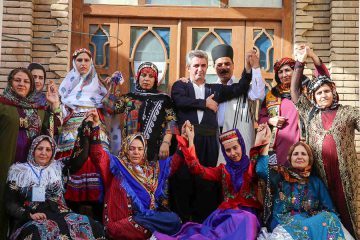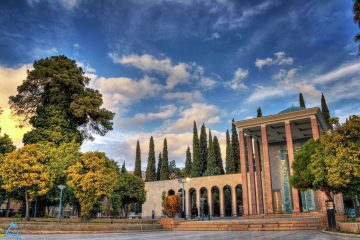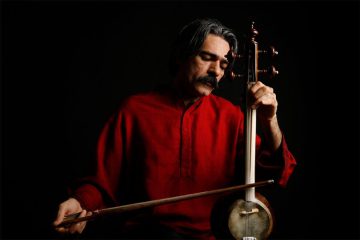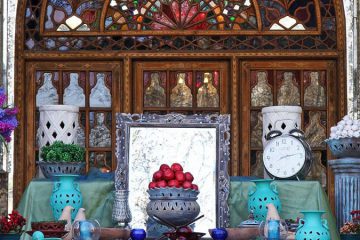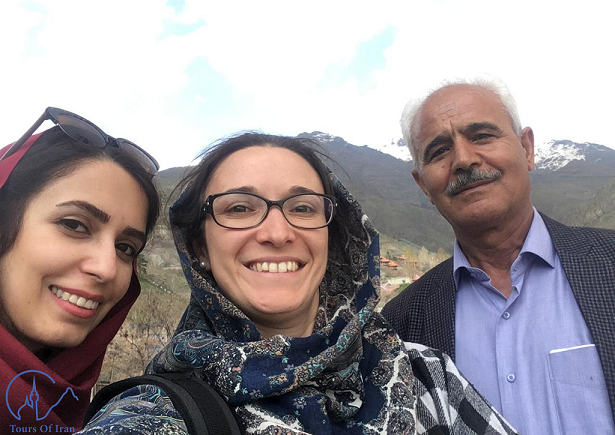
Symbol of Iranian Identity
The Sacred Gardens, Seats of Gods
About a millennium BC, in Western Asia, especially countries like Iran, and later in the second or third century after Christianity, gardens were built anywhere that mountains, hills, or rivers were considered holy. Rather than a simple piece of nature, these gardens were sacred like a temple. In these places, trees represented gods. The rivers of these gardens were filled with the money thrown in by visitors as they made wishes. The fish, birds, and pigeons were respected; no animal was hunted there. In Ancient Iran, these gardens were called Pairi Daeza which literary meant surrounded by wall, which refers to the confinement of the gardens by the protective walls. The world has taken the word Pairi Daeza and turned it into Paradise, and in Persian, it was changed from Paliz to Pariz and then culturally Arabized in the form Fardis and Pardis. The most essential part of a garden is trees, which indicate any plant with a root, stem, or leaf. However, much is connoted in this relatively simple term, which is why it is an integral part of Iranian art and beliefs.
The sanctity of trees has a long history in Iran, dating back to pre-historic times when early farmers and nomads considered the world a wheel rotating around a fixed axis. The tree becomes the sign of the divine axis. In Pahlavi, the Old Persian language, “Dar” has three distinct entries: tree-fruitful and fruitless, long stick, and house. The feeling of steadiness and permanency is apparent in all of the entries. “Dar” still has all these meanings in Kurdish.
The famous mythology expert Mircea Eliade affirms that the tree is the source of life and the sign of a dynamic world because it always revives. According to Eliade, the power and energy of a tree turn it into a sacred, worshipful entity. The power is represented in its vertical growth, and its energy is the power of revival after the falling of the leaves. The primitive man generalized this rejuvenation to the whole world and the tree became a symbol of the universe.
The Sanctity of Trees in the Iranian Culture
Believing in the sanctity of trees caused people to attribute different characteristics to trees, like the power to cause rain, to make the sun shine, to multiply the herds, and to help women become more fertile. The most important outcome of such belief is the rise of the tree’s position in Iranian culture. Even now, in villages in Iran, people still tie small fabrics to the tree’s branches hoping their wishes come true.
The presence of trees in mythology and religion is significant as well. Both Zoroastrianism and Islam use trees as symbols of abstract but positive ideas. In Buddhism, one of the most critical Sassanid texts in Pahlavi, two trees are named that grow in the same place, in the heavenly sea of Vourukasha; One is Ham-e Tokhmeh (the Tree of Many Seeds) which is the mother of all plants; the other is Hum Sepid (Hoama) that brings immortality and is the master of a set of plants known as “the Preventers of Death”.
The holy book of Zoroastrians is known as Avesta. In Vendidad a part of Avesta, a tree called Gaokerena is introduced, covered by thousands of leaves and known for bestowing immortality. Many Avesta experts regard Gaokerena the same as Haoma. Bundahishn confirms the presence of this tree when telling the story of how Ahura Mazda, the creator and god of Zoroastrianism, planted a tree near the Ham-e Tokhmeh, a tree that stops aging and revives the dead and gives immortality; the tree that rests near Ardvi Sura spring and belongs to the Zoroastrian goddess, Anahita. Anyone who eats it will be immortal. This tree is the master of all plants. The similarity of the tree’s characteristics and its title as the master of all plants prove that both trees are the same but with different names.
In ‘menog-I Khradi (Spirit of Wisdom), another important Sassanid text in Pahlavi, two distinct trees are also mentioned. One is believed as “the appeaser of the dead’s soul” in the Varkesh Sea resting in the deepest part of the sea, where the Farvahi and the fish guard it against evil. The other is the Sorrow Preventoer Tokhmeh where Simurgh, the legendary bird, lives. Whenever Simurgh leaves the tree, thousands of leaves and branches grow on it; whereas, once it returns thousands of branches and leaves are broken and scattered to spread the seeds to the earth.
Moreover, in the Quran as well, two sacred trees are mentioned. One is the Never Ending tree and the other is the Olive tree. The Islamic hermeneutic thoroughly explains these two trees in detail.
Best Of Ancient Persia Tour
The Sanctity of Cypress in Iranian Culture
As mentioned, the tree is a sacred concept per se, but among all trees, Cypress gains meanings far beyond a simple tree. Cypress is one of the endemic plants of Iran. Some scientists believe the word Sarv, the Persian equivalent of Cypress, doesn’t have Indo-European roots. If this theory is accepted, then the term Sarv comes from the language of indigenous residents of Iran. After the immigration of Aryans to Iran, Sarv became a symbol of the god of Mehr (Mitra), and the Chenar ((Plane tree) represented Ahura Mazda. When the trees become symbols of divine figures like Mehr and Ahura Mazda, planting them is also considered a holy act. It’s believed that tree of Plane tree was the symbol of divine ruling and usually was accompanied by the shape of a vine tree that had twisted around its trunk. The divinity of Plane is seen all around Iran; usually, the shrines and holy places are next to springs where a big, thick Plane tree grows.
As the Plane, Cypress received vast popularity. Indeed, Cypress has been far more visible in diversity and plurality than Plane. Undoubtedly, Cypress is related to Mithraism (Mehr Parasti). In Iran’s history, there were always two religions coexisting together for thousands of years; one represents the official religion determined by the ruling power, while the other represents the history and ancient roots of people. Sometimes these two walk hand in hand so that their symbols are available everywhere concurrently, whereas sometimes they occur far apart.
Due to the establishment of Zoroastrianism as the official religion, ancient Mithraism slowly faded into insignificance among Iran’s ruling class and governmental officials. Even though its influence and traditions were so significant that the Zoroastrians had to acknowledge it, Mithraism became a religion that still had an active role in the mind of people – despite not officially being a dominant religion. Therefore, to save the integrity of their religion, the ruling society turns Mithra into a follower of their god, Ahura Mazda. On the other hand, people adored the former religion with all the symbols and traditions concerned so they tended to resort to Cypress as a sign of Mithraism versus Plane as the symbol of Ahura Mazda. And the concept of Azadegi – meaning free-spirited – which is undoubtedly integrated into the concept of Iran and Iranian, is predicted to Sarv (Cypress) as the symbol of Mithraism and national identity. As a result, in Iranian literature, Sarv embodies freedom and a free spirit.
The Cypress-Related Rituals
Cypress is expected to appear in Pre-Islamic Iran as a sign of Mithraism. Interestingly, both rituals of Yalda and the Islamic ritual of NakhlGardani are witnessed in the pre-Islamic era. The winter celebration or the birth of Mehr (Mithra), known today as Yalda, is one of the ancient Iranian rituals. Fire, light, lamps, and warmth are the significant parts of this ritual. To be protected against the evil, lighted torches were attached to the exterior walls of Cypress surviving even in the cold weather and symbolically representing the strength and resistance against hardships. That is why it is the best example of representing Mithra’s ritual. On Yalda, youngsters put their wishes in colored fabrics and hang them over a tree hoping that Mithra will grant them. When Mithraism was taken to Europe from Iran, pine replaced Cypress which was scarce there.
Nakhl Gardani (literary meaning moving the palm) refers to a ritual that involves carrying a heavy wooden structure shaped like a leaf around the city for the mourning rites of Ashura and is held to commemorate the martyrdom of the third Shiite Imam, Imam Hussein. This structure resembles a cypress tree and has nothing to do with “palm”, and the term “palm” simply turns out to be synonymous with “tree” in general.
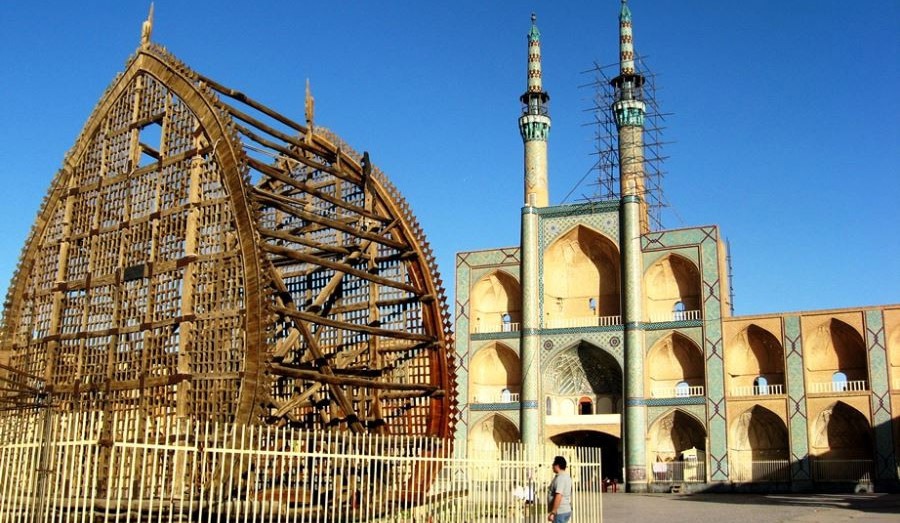
The Ancient Cypresses of Iran
Zoroaster is said to have planted two Cypress trees that he had brought from paradise: one in Forumad and the other in Kashmar. The story of the sacred tree of Kashmar is known worldwide and mentioned in “Shahnameh” (the epic masterpiece of Ferdowsi) and many historical books. And it is said that Zoroaster planted a cypress tree in Kashmar that, as Daghighi, the famous Samanid poet and the writer of “Mansouri Shahnameh”, describes the tree as gigantic that Motecakej, the Abbasid Caliph, ordered the ruler of Khorasan, Taher ibn Abdullah, to cut it down and use it for a vault in the construction of the palace of Baghdad, Iranians offered to pay 50 thousand Dirhams to save the tree, but Taher didn’t accept and went on with the order. When it was cut and fell to the ground, the earth shook and the Qanats (underground water system) were destroyed. The tree was believed to be around 1450 years old and the length of its trunk was equal to 28 whips put together. After the cutting, the sky became pitch dark with the birds that nested there and flew away at the time of the incident. The branches were taken to Baghdad with 1300 camels, and by the time they reached Baghdad, Motevakel was assassinated.
The other famous Cypress of Iran is in Abarkuh about which many stories have been told. The tree is one of the main attractions of Abarkuh, located on the Estakhr-Yazd road. The locals believe it is the oldest cypress in the world; the tree is about 25 m tall, 18 m wide, and has a trunk of around 5.11 m. it is paramount that it has been mentioned in the historical books. Hamd Allah Mostoufi, the poet and historian of the 13th – 14th century, writes about Abarkuh in his book Nezhat Ol Qoloub as a city where an ancient tree renowned in the world exists.
The most extensive collection of cypresses is in Baan Savl village in Chavar, Ilam province. The 22 cypresses here are more than 2600 years old, a fact that is not well advertised, and therefore, the cypresses are seriously in danger of being burned or cut.
Beauties of the Desert & Traditional Scenery
Exploring the Symbol of Cypress in the Iranian Culture
Cypress as a symbol is ubiquitous in Iranian culture and history, but when it comes to examples, Persepolis is undoubtedly the most essential, beautiful instance.
The symbol is available in the Parthian civilization when Mithraism was probably the dominant religion, and the Sassanids used it differently.
After the advent of Islam, the cypress symbol is mainly seen in Khaneghah (the spiritual retreat of Sufis) and Zoorkhaneh (the place of Iranian traditional sport). In Islamic Iran, the cypress as a symbol turns into two simple curved lines gradually inclined to one side. Here is where the pattern of a paisley is shaped, the pattern that is reflected in the Persian carpet, textiles, and other forms of handicrafts. In fact, paisley is the more minor form of cypress.
In the Zoorkhaneh, the paisley becomes the symbol of velour and freedom. Even the armband of champions has a paisley on it. It’s believed that Zoorkhaneh is the transformed version of a Mithraism temple. The cypress is seen in carpets, Termeh (a form of embroidery) miniature, and gilding.

Cypress in Iranian Literature
From ancient times, cypress in literature represented the free-spirited man. It is usually accompanied by the adjective Sahi which means tall, lofty, and beautiful. Many poets have used Sarv in their words.
When the time comes, make our coffin from the Cypress Tree since we will perish for a beautifully tall beloved – Hafiz.
Did you get any questions about the symbol of Iranian Identity? Please contact Tours of iran.
The Perfect Iran Tour for First Timers

